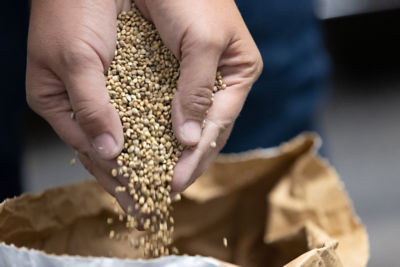Causal Agent
Colletotrichum orbiculare
Distribution
Worldwide
Symptoms
This disease is most commonly found on cucumber, melon and watermelon. Symptoms on leaves begin as water-soaked spots which typically become yellowish in appearance on cucumber and melon or dark brown to black on watermelon. These spots eventually turn brown and may expand over the leaf surface. Foliar lesions are not restricted by leaf veins and often have cracked centers. Infected petioles and stems may develop shallow, elongated, tan lesions on melon but the lesions are less obvious on cucumber. Stem lesions on melon can girdle the stem and cause plant wilting. Infected fruit develop circular, sunken, blackish lesions where tiny fruiting bodies (acervuli) may develop. Under humid conditions, the fruiting bodies produce conidia which give the lesions a pinkish-salmon color, which is very characteristic of this disease. When pedicels of young fruit become infected, the fruit may shrivel and abort.
 Post-harvest fruit symptoms on slicing cucumber. (Courtesy of Charles Averre)
Post-harvest fruit symptoms on slicing cucumber. (Courtesy of Charles Averre)
Conditions for Development
Colletotrichum orbiculare can be associated with seed and infected crop debris. Spread of this fungus can occur by splashing rain, overhead irrigation, insects, field workers and equipment. Disease development is favored by warm, humid weather. Optimum temperature for disease development is 24°C (75°F). Late infection of the crop may result in fruit becoming unmarketable during storage, shipment or display.
Control
Implement a comprehensive preventative fungicide spray program. Employ other cultural control measures, such as crop rotation (two years out of cucurbits), avoid overhead irrigation, thoroughly incorporate crop debris following harvest and implement a hygiene program for personnel and equipment. Use resistant varieties when available.



